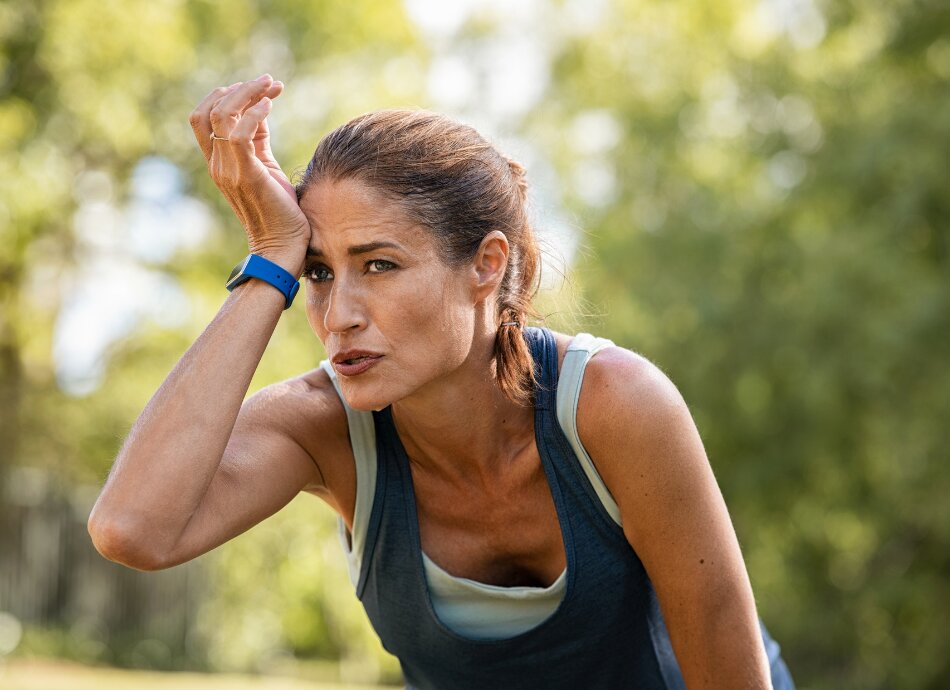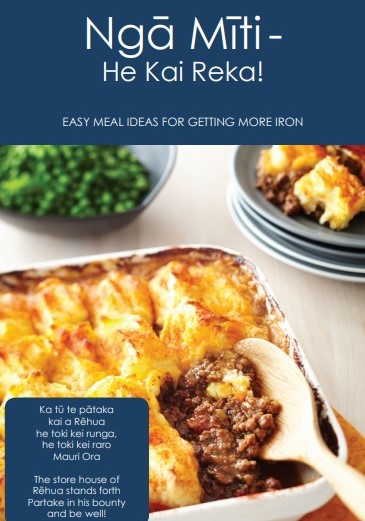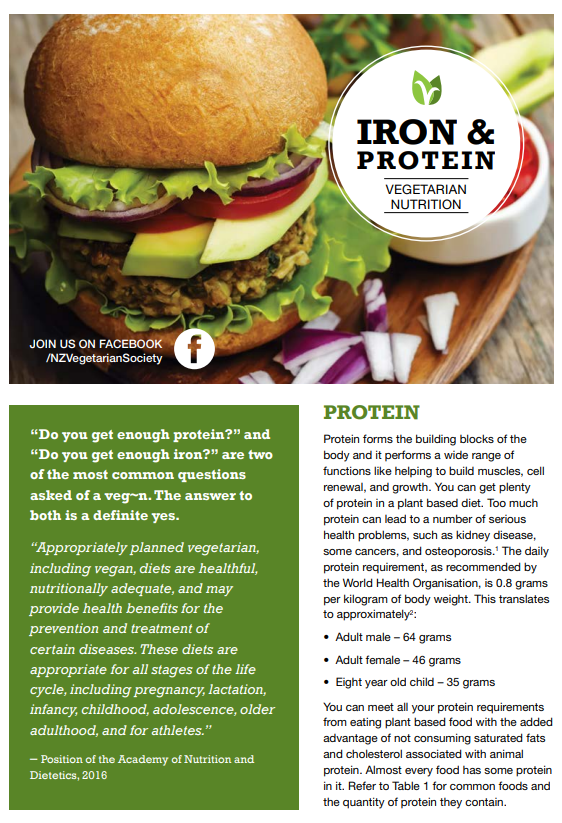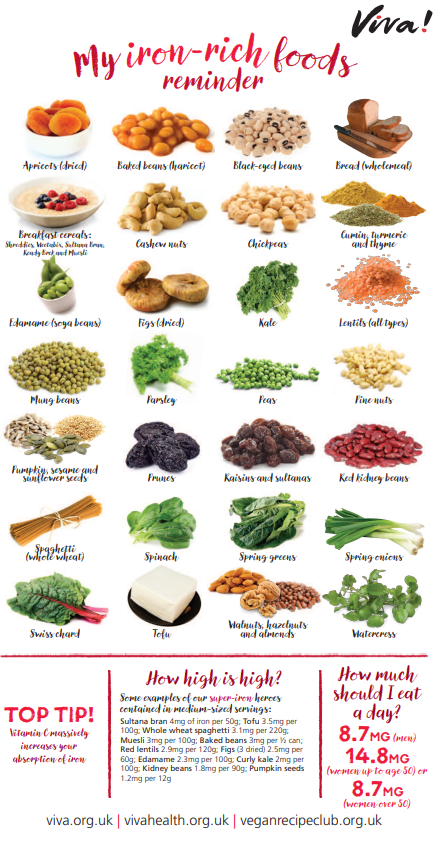Low iron (iron deficiency)
Key points about iron deficiency
- Iron is an important mineral needed by every cell in your body to maintain healthy functioning.
- Low iron is the most common nutrient deficiency worldwide.
- Common causes are not getting enough iron from food, high blood loss, poor iron absorption or increased need for iron at certain life stages.
- Very low iron can lead to iron deficiency anaemia with symptoms of shortness of breath, fatigue, reduced exercise tolerance and poor concentration.
- Treatment includes taking iron supplements and eating more iron-rich foods, eg, red meat, leafy greens, dried fruits and iron-fortified cereals.

Iron is an important mineral that is found in every cell of your body. It is stored in your liver, spleen and bone marrow as ferritin.
Iron is needed by your body for many roles, including:
- producing red blood cells to carry oxygen around your body
- producing proteins to carry oxygen to your muscles
- a healthy immune system to fight infections
- normal child growth and intellectual development
- normal production and functioning of cells and hormones
- healthy hair, skin and nails
- healthy brain development.
There are many causes of low iron including the following:
- Not eating enough iron-rich foods – especially if you are in a group that needs it most (see below).
- Too much blood loss – red blood cells contain iron, so you lose iron if you bleed a lot, eg, with heavy periods, regular nosebleeds, a stomach ulcer (you lose blood in your gut), bowel cancer (which can cause hidden bleeding from your gut) or from medicines such as NSAIDs and aspirin.
- Poor absorption of iron – this can happen when you have gut conditions such as coeliac disease, after gastric surgery or taking certain medicines.
- Increased need for iron in certain stages of life – such as during rapid childhood growth, adolescence, pregnancy, breastfeeding or when exercising a lot.
In Aotearoa New Zealand, the people most at risk of low iron are those who are:
- having periods (menstruating)
- pregnant or breastfeeding
- young children
- teenagers
- athletes
- vegetarians and vegans.
Having periods (menstruating) and being pregnant
If you have periods, you need more iron because of the blood loss. If you get pregnant, you also need more iron during pregnancy.
Young children
Young children are at risk because they are growing quickly. Iron deficiency in preschool children in Aotearoa New Zealand is a cause for concern, with up to 14% of those under 2 years of age having low iron. Low iron levels can have a permanent impact on brain development, making these children less able to learn.
They may also not gain enough weight, have problems with feeding and digestion, get tired easily and be more prone to infection and illness. Children between 6 and 24 months are at greatest risk, especially those from Māori, Pacific Peoples and other non-European families.
Teenagers
Teenagers need extra nutrients to fuel growth spurts, but they are also more likely to have a poor diet.
Athletes
Iron can be lost through excessive sweating in athletes. Some athletes who need to be a certain weight for their sport have unbalanced diets.
Vegetarians and vegans
Iron in plant-based foods is not as easily absorbed by your body as iron found in meat, so vegetarians and vegans may get too little iron from their diet. Tell your doctor if you don't eat meat, so they can give you some advice about what to eat or refer you to a dietitian. However, a well-planned vegetarian diet can provide enough iron and eating foods containing vitamin C alongside iron-rich foods helps your body to absorb the iron more efficiently.
Restrictive diets
If you follow a restrictive diet such as a diet where you avoid certain food groups or that can cause you to lose weight rapidly, you can become low in iron.
Mild iron deficiency may cause no symptoms, or you may have symptoms such as lack of energy, difficulty concentrating or learning, headaches, irritability or be prone to infections. You may also find your nails break more easily or notice your hair is dryer or falling out.
If you are severely iron deficient, this can cause iron deficiency anaemia (low red blood count).
Symptoms of iron deficiency include:
- tiredness and fatigue
- racing heart rate (palpitations)
- pale face or mouth
- being short of breath when you exert yourself
- poor concentration
- angina or chest pain getting worse.
A simple blood test from your doctor can tell you if you have low iron or not. Some people may only find out they have low iron levels through a routine blood test. But if you have any of the symptoms above, talk to your doctor so they can work out whether you have low iron and, if so, diagnose the cause.
Your doctor will ask you questions about your symptoms, what you eat, the medicines you take and your family medical history. If the cause is not an obvious one like heavy period bleeding, they may also examine your stomach or do a digital rectal exam. This involves inserting a finger into your rectum (bottom) to check for blood loss.
If your doctor thinks you may have low iron, they will order blood tests to check your iron levels and red blood count and to find out if you are bleeding somewhere in your body.
Further testing may be needed if the cause of your low iron is unclear, including:
- a urine (pee) test to find out whether there are red blood cells in it
- endoscopy – a flexible tube with a camera in inserted into your gut either from your mouth or from your rectum to look for any hidden sources of bleeding
- a blood test and an endoscopy to check for coeliac disease.
Read more about the types of blood tests done(external link) to diagnose iron deficiency.
Treatment depends on the cause of your low iron. As well as treating the cause, your need to increase your iron levels by taking these steps:
- Increasing how much iron you get from the food you eat (see below).
- Taking an oral iron supplement. This could be a tablet or a liquid. Iron supplements need to be prescribed by your doctor. Read more about oral iron supplements.
- Having an iron injection.
Iron supplementation should only be done under the supervision of a doctor. Your blood count should be checked regularly to make sure your iron stores have returned to normal.
Your body absorbs only a small amount of iron at any one time, so you need to eat a variety of iron-rich foods every day.
Foods containing iron include:
- meat and fish – beef, lamb (especially kidneys and liver), veal, pork, chicken, mussels, oysters, sardines and tuna (iron-rich sources)
- fruits – dried fruits such as prunes, apricots, raisins, currants or peaches, and prune or blackberry juice (moderately rich sources)
- vegetables and legumes – greens (eg, spinach, silverbeet, lettuce, bok choy, puha), beans and peas, pumpkin and sweet potatoes (best plant-based sources)
- grains – oats, iron-fortified breakfast cereals and wholegrain breads.
The iron in meat, fish and chicken is called haem iron. There is more of it and it is more easily absorbed than the iron in vegetables, fruits and grains, which is called non-haem iron. It is best to get iron from a variety of sources – haem iron also helps your gut absorb non-haem iron.
The table below shows the iron content in 100g of different foods:
| Haem iron | |
| Lamb kidneys | 15mg/100g |
| Beef mince | 2mg/100g |
| Chicken breast | 1.9mg/100g |
| Non-haem iron (harder to absorb) | |
| Tofu | 2.5mg/100g |
| Baked beans | 1.2mg/100g |
| Spinach (raw) | 4.4mg/100g |
| Wholemeal pita bread | 1.8mg/100g |
To get the most out of iron-rich foods:
- eat foods rich in vitamin C (citrus fruits, leafy green vegetables) to help iron absorption
- don't drink milk with meals or when you take your iron tablets as the calcium in it can interfere with iron absorption
- don't drink tea or coffee with meals as this also reduces iron uptake.
Talk to your doctor if you need a referral to a dietitian for dietary advice.
Read more about iron.
Infants and young children
Infants should be exclusively breastfed until around 6 months of age. Breast milk should be given until at least 1 year of age because it provides iron in a form that is very easy to absorb. If babies are not breastfed, then they should receive infant formula until they are 1 year of age.
At around 6 months, solid foods should be introduced to help babies get enough iron to meet their growing demands. Meat purees or iron-fortified cereals are good choices.
- Cow’s milk should not be given in the first year of life. It is not a good source of iron and can cause stomach upsets with some bleeding in the gut and further iron loss.
- Tea should also not be given to pre-schoolers as it prevents iron absorption.
Make sure your child’s diet is well balanced and contains a wide variety of the iron-rich foods mentioned above. Refer to Plunket guidelines(external link) on when to introduce different foods. An iron supplement may be needed if your child has iron deficiency.
Apps reviewed by Healthify
You may find it useful to look at some Self-management and healthy living apps.
The following links provide further information about iron deficiency. Be aware that websites from other countries may have information that differs from New Zealand recommendations. </p
Iron(external link) NZ Vegetarian Society
What's your number – could you be short on iron?(external link) Beef + Lamb NZ
Anaemia(external link) Gastro Info NZ
Low iron and iron deficiency anaemia(external link) HealthInfo Canterbury, NZ
Iron deficiency anaemia(external link) NHS, UK
Iron deficiency(external link) DermNet NZ
Iron(external link) Nutrition Foundation, NZ
Anaemia(external link) Pathology Tests Explained, Australia
Iron-rich food guide(external link) mindbodygreen, US
Apps
Self-management and healthy living apps
Resources
Eating for healthy vegetarians(external link) HealthEd, NZ, 2019
Thousands of New Zealanders don't get enough iron – are you one of them?(external link) Beef + Lamb NZ, 2022
Fuelled by iron(external link) BEEF + LAMB New Zealand, 2022
Ten tips to improve your iron intake(external link) BEEF + LAMB New Zealand, 2023
What's your number?(external link) BEEF + LAMB New Zealand
Ngā Mīti He Kai Reka! Easy meal ideas for getting more iron(external link) Beef + Lamb NZ
Going veggie – healthy eating(external link) The Vegetarian Society, UK, 2019
Nutrition – iron and protein [PDF, 355 KB] NZ Vegetarian Society
My iron rich foods reminder(external link) Viva!, UK
References
- Iron deficiency(external link) Auckland Regional HealthPathways, NZ, 2020
- Iron deficiency(external link) Starship Clinical Guidelines, NZ, 2016
- Iron-deficiency anaemia(external link) Patient Info, UK
- Grant CC, Wall CR, Brunt D, Crengle S, Scragg R. Population prevalence and risk factors for iron deficiency in Auckland, NZ(external link) J Paediatr. Child Health 2007; 43: 531-7.
- The concise NZ food composition tables(external link) Ministry of Health, NZ, 2018
Clinical guidelines and resources
Anaemia on full blood count – investigating beyond the pale(external link) BPAC, NZ, 2013
Iron absorption(external link) Beef + Lamb NZ, 2020
Iron deficiency anaemia in pregnancy and post-partum – prevention and management(external link) Counties Manukau District Health Board, NZ
Anaemias and some other blood disorders(external link) NZ Formulary
Intravenous iron and hypersensitivity(external link) Medsafe NZ, 2014
Ferritin(external link) Lab Tests Online, US
Continuing professional development
Anaemia in old age – common presentations(external link) BMJ Learning, UK
Apps
Brochures

Beef + Lamb NZ

NZ Vegetarian Society

Viva!, UK
Credits: Healthify editorial team. Healthify is brought to you by Health Navigator Charitable Trust.
Reviewed by: Emma Shields, Registered Dietitian, Gisbourne
Last reviewed:
Page last updated:





